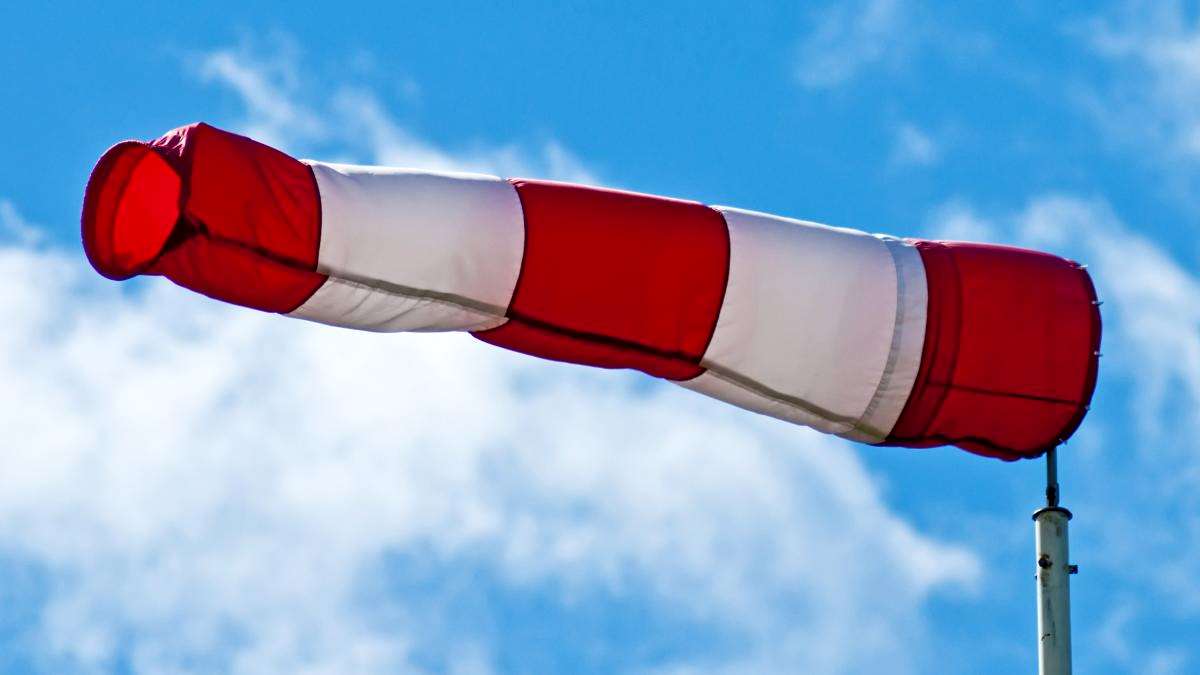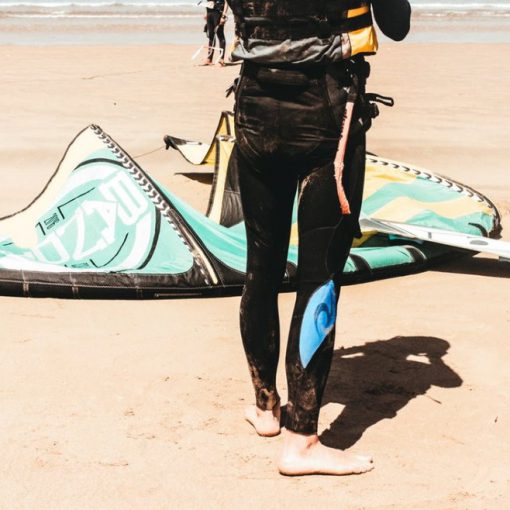After six seasons working as a Kitesurfing instructor and having surfed about forty kite spots in eight different countries, I came to this conclusion:
The ideal conditions for learning to Kitesurf are the exception rather than the rule.
This said, there are still better locations than others, and I understand how for a novice, it’s not easy to choose a kite spot. This article is here to help you!
But if you don’t know anything about Kitesurfing, educate Yourself on Wikipedia before reading this. It’s also a good idea to check the glossary while reading.
In my career, I’ve seen places with rather difficult conditions to learn, packed with tourists, this is for only one reason: Marketing. I have witnessed a lot of flyers advertisements which looks funny to a seasoned professional: “Perfect conditions all year-round”, “ideal Spot for beginners and for the experienced”, “among the best locations in the world”, “learn more quickly”… Marketing. Normally kite spots are advertised targeting just the main factor that drives tourists to visit a kitesurfing spot: the monthly average of windy days. But there are several other factors to take into account that can greatly affect the ease and speed of your learning curve: Wind quality, wind intensity, spot type, depth of water, qualifications and teaching method of the Instructor and the School you chose…
The Perfect Spot to learn How to Kitesurf
If I could draw the perfect spot to learn kitesurfing (and also to practice it), it would be: a lagoon of flat, waist-high water with sandy bottom (even muddy to absorb crashes, why not!) and clear of any kind of obstacle: Rocks, corals, trunks, poles, pylons, sea urchins or anything of the likes. The shore would be a beautiful wide space with no obstacles and lots of room to set up and pack your Kite; possibly a lawn, to avoid bringing sand back home at the end of the day. Constant wind between 14 and 20 knots, blowing from the sea transversely to the beach (side-on). 25° temperature and Sun, few people, even better if deserted.
Even-though spots like this exist, it is pretty rare that all the above conditions are fulfilled. Normally, at least one will be missing: dangerous obstacles on the shore or on the sea bottom, deep water or chop, currents, wind unreliable or gusty, too strong or too weak. Even if you’re able to find the spot that satisfies all the above conditions, there is a factor that you will never win against: crowds. While Kiteboarding is not football, it has now become pretty popular and “cool”, and in a spot which presents all the above conditions, do not expect less than twenty people, even in the most remote atolls. Try it!
Considering that kites are attached to lines in between 20 and 27 meters, a small spot gets packed very easily.
(note: For learning, shorter lines between 10 and 15 meters are recommended).
Hey Grillo, haven’t you just said that I’m never gonna be alone?
How to choose the best spot to learn Kitesurfing
Firstly, if you have a Kite Spot close to home, regardless of the conditions, I suggest you start learning there. It will likely be the spot where you’ll be kiting more often once learned; Your instructor will inform you about the spot, the local rules, the wind conditions, and how to interpret the local weather. Learn the basics and leave the trips for a later moments, when you can progress and improve.
If you’re not so lucky to have a “home spot”, or if you want to mix business with pleasure by traveling to a place where you can learn the sport, here are the key factors to consider:
The Spot
Open sea, lakes or lagoons, the spots where you can practice kitesurfing are countless and different from each other. As said earlier, it will be easier to learn on a spot with shallow water, where you can step on the bottom at all times.
But for learning, Shallow Water and Deep Water both have their own advantages and disadvantages.
Shallow Water
Undoubtedly, in shallow water it will be easier to learn how to put the board on and to recover it every time you lose it; but for this same reason, you could easily get spoiled and not learn how to rescue the board with the body-drag technique when you lose it (which is very typical of those who learned in shallow water). You could, therefore, find yourself uncomfortable when kiting in deep-water spots. Also, in shallow water, it is easier to hit the bottom when you crash or fall, with also the added chance of obstacles or dangers just underneath the surface (i.e. sea urchins). Always stay where the water is at least heaps–high and ask the locals about the spot before entering the water.
Deep Water
Your progression might be a little slower because it will take more effort to rescue the board every time you lose it. Even a distance of just a meter from you could be difficult at the beginning. On the other hand, deepwater ensures that you will never hit the bottom or obstacles underneath the surface, and it forces you to learn the upwind body-drag technique efficiently to rescue your board. Novices who have learned in deep water are often more independent. Conversely, if the lessons always start from a boat (as is the case in certain lakes, for example), you might end up struggling to launch, land and manage the kite on the ground, which is the place where most of the accidents occur. For this reasons, ideally, a Kite course should always include a part on the ground.
Open Spot
An open spot, like a beach, is more exposed to swells. On the surface of the water, it will form crests (called “chop”) or waves, which will make it a little more difficult to waterstart, to ride and to go upwind. The trick to ride through the chop is to keep your legs relaxed and use them as “shock absorbers” to pass the crests. If the waves are quite sizey, they will make everything more difficult, even learning to body–drag. It is not advisable to learn to Kite in between big waves (say, more than one meter).
Still, if you manage to learn to Kite in a wavy spot, every other spot will seem very easy in comparison.
WARNING: Kitesurfing in an open spot where the wind is blowing from the shore (side-offshore direction), it is not advisable until you are very experienced because if something goes wrong, there is a risk of not being able to return to the shore. A school that works on a spot with “offshore” wind must have an effective rescue service (read more in the section “The Wind”, just below).
Closed Spot
In a closed spot, where the water surface is sheltered from the wind, it is easier to find flat water which is nice and enjoyable for Kitesurfing. However, this rule does not apply to large lakes and lagoons, where little waves and chop will still take form.
A closed spot ensures that you and your equipment don’t end up anywhere if something goes wrong. But beware of the obstacles around: a closed spot surrounded by sand is OK, a spot surrounded by rocks is a potential hazard. A closed spot, especially if surrounded by large obstacles such as dunes, buildings, mountains or hills will also tend to have gusty and unreliable wind (as the wind passes through the obstacles creating turbulences) .
The Wind
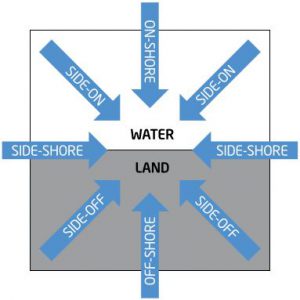
One of the very first things I always teach on a lesson: wind must be evaluated according to three parameters: direction, intensity, and quality.
Wind Direction
Not all directions are good for Kitesurfing.
You may have already heard about “onshore” and “offshore” wind:
- ON-SHORE: The wind blowing from the sea to the shore, perpendicular to the coast.
- OFF-SHORE: The wind blowing from the shore towards the open sea. Again
But referring to the coast, there are other directions that the wind can take:
- SIDE-SHORE: Wind blowingparallel to the coast.
- SIDE-ON: Wind blowing from the sea to the shore
- SIDE-OFF: Wind blowing from the shore to the sea diagonally.
To cut short: the best directions for kiting are: Side and Side-ON, because they allow practicing more safely without the wind tending to drift you away from the coast.
In particular, the side-ON wind will tend to always bring you back to the shore, whatever happens. It is therefore the best possible condition.
ON-shore wind, perpendicular to the coast, is very difficult for a beginner, because, until you are able to turn to upwind direction promptly, it will drift you back to the shore too quickly.
OFF-shore is the only wind direction that even experts do not kite, because it pushes you away from the shore too directly and in case of troubles, you won’t be able to come back.
Side-OFF is a wind direction for experts, you can still kite keeping yourself close to the coast, but if something goes wrong, you will still end up being drifted away. On busy beaches where the side-off wind blows regularly, there’s normally a rescue service, but you have to pay for it! (be informed in advance!).
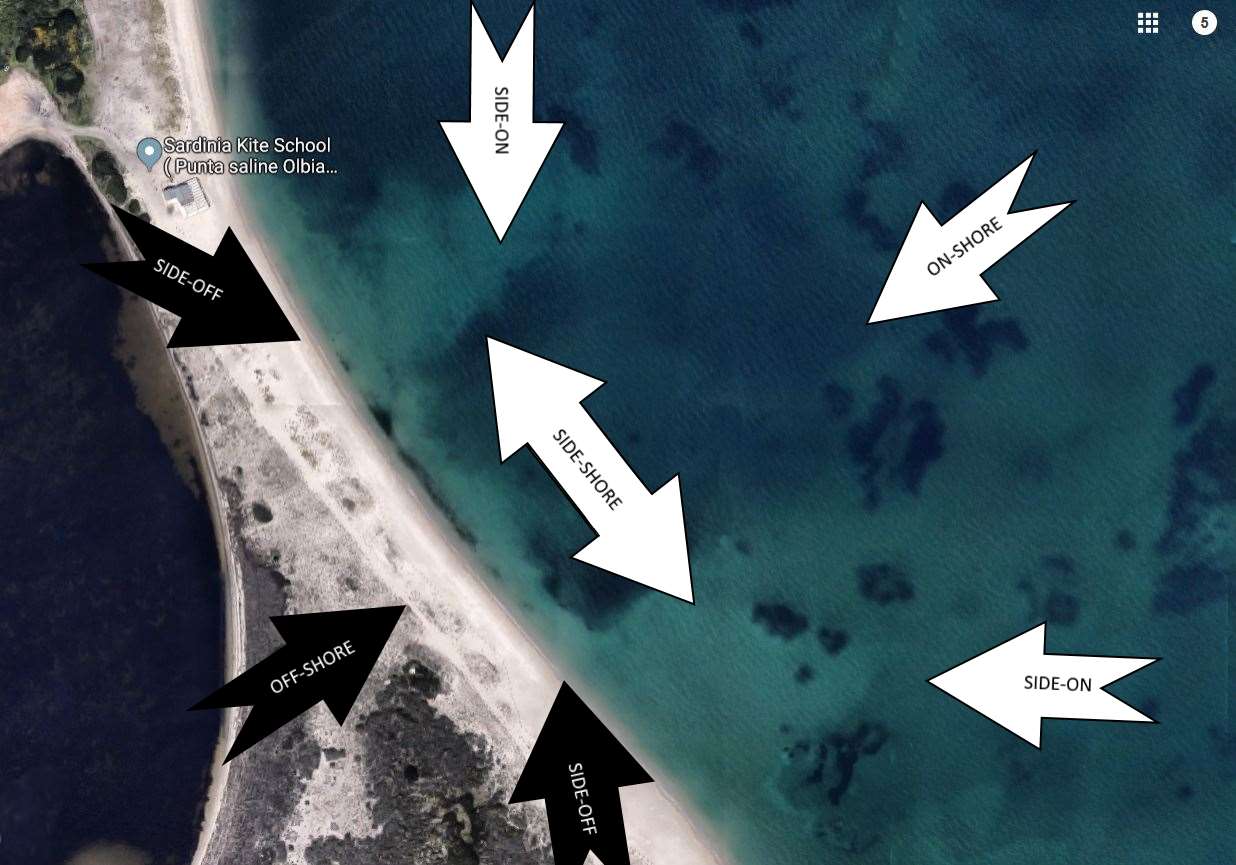
Wind Intensity
With modern equipment, Kiteboarding can be practiced from less than 10 knots (18,5km/h) up to 45+ knots ( 80+km/h). But to learn to Kitesurf, I recommend at least a dozen knots (something less for body drag exercises), up to a maximum of 25 knots (even 20kt for those who are very green). It will be much harder to learn in too light wind conditions, and risky when the wind is too strong.
The size of the sail must always be proportionate to the wind, to the rider’s weight and to its own experience (this will merit a separate article).
Wind Quality
A less discussed aspect when talking about a spot, Wind Quality is a rather important factor to take into account. Wind quality defines whether the wind is reliable and constant (therefore nice and easy to Kite), or unreliable and gusty, which will make everything trickier.
WARNING: Wind is never the same every day (except at rare locations), the above-described factors can vary from one day to another, even at the same spot.
Seasons
Keep in mind that in most places, the wind follows seasons: visiting a spot in the wrong period might lead to being grounded. Actually, even by visiting a spot on the best season just for a few days, you will have no guarantees. This is one of the reasons which led me to undertake the instructor career: ‘cause it allows me to have longer journeys and spend more time (and work) on a same spot. (read here about my own theory: “ A Trip of less than a month is a Long Weekend”).
Thermal wind
At some spots, the difference in temperature between water and soil on certain seasons leads to the formation of tendentiously reliable and often daily breezes, if certain weather conditions are met. It is a factor to take into account and investigate before you leave.
If you have come this far in reading, you will understand at this point why there are no perfect spots and the many factors you need to consider before choosing your spot, which is, where to learn Kitesurfing. But this is where this article comes to help you!
How to Plan your Kite Trip
Avoid consulting fliers, Touristic and Surf Schools’ websites, promotional videos and every other marketing material. They will not be objective.
Make a thorough investigation:
- Check out web forumsand groups on Kiters are friendly and willing to help, you will always find someone ready to answer your questions and give some advice.
- Listen from first-hand experiences and don’t trust“hearsay”. Avoid non-specialized sites.
- Learn how to forecast the weather.
- Take a look at Wannakitesurf, it’s a dated and not often updated website, but it’s packed with information uploaded by enthusiasts.Do not trust when it says: “Experience: Everyone” about a spot, but rather interprets its data according to the analysis above.
- On the infamous Windguru, you can read forecasts andmonthly wind statistics for a spot by selecting “More” and then “statistics“. Stats are measured in Beaufort (consider just values from 4BF to 6BF). There is also a function called “Top location”, but watch out for values stronger than 6BF as this wouldn’t be suitable for beginners.
- Buy a Surf Guide,like the epic Stormrider. Follow the link for the Kite and Windsurf edition.
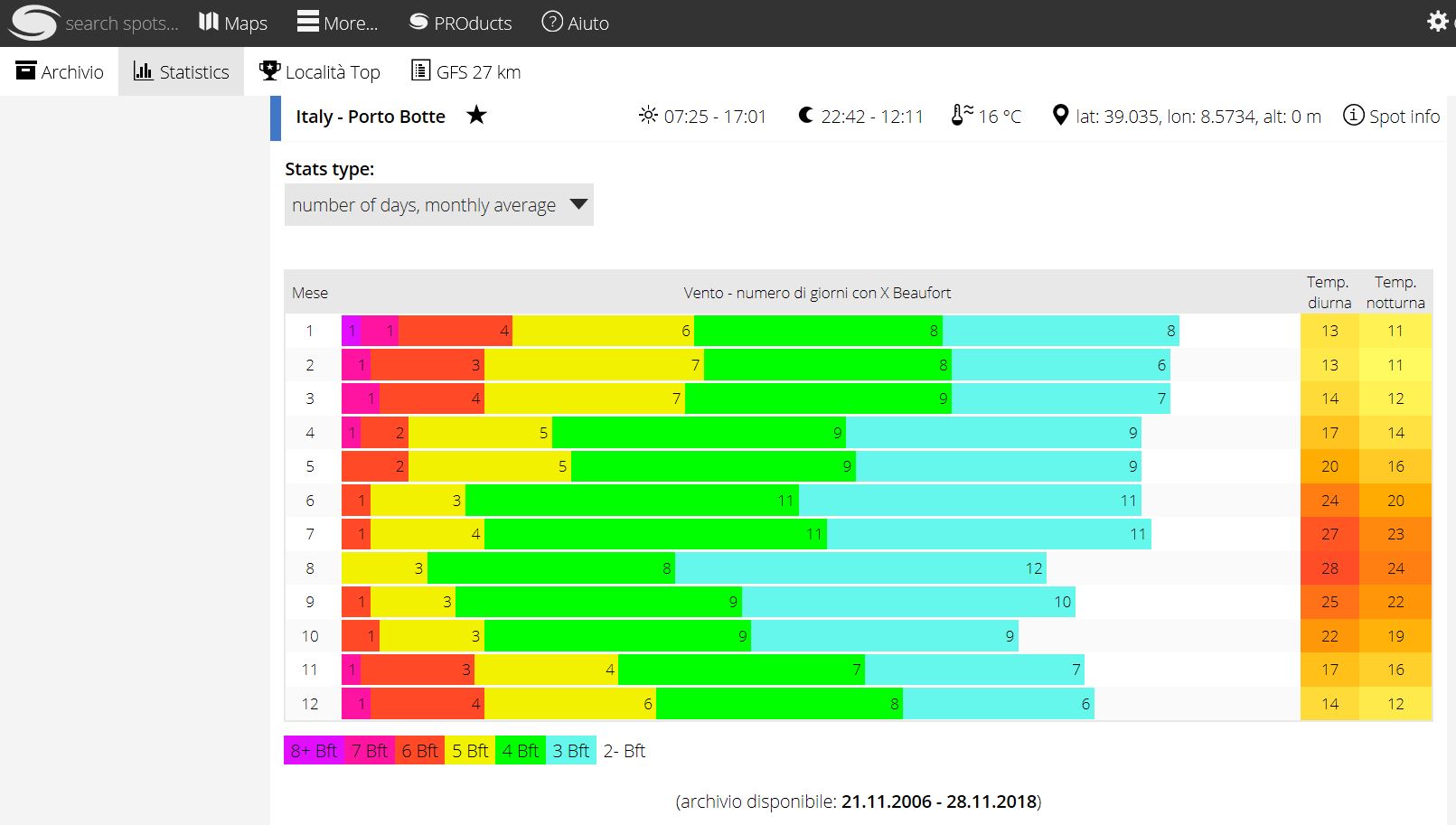
For more tips for learning how to Kitesurf and read some funny stories about my instructor career, click on the links.

